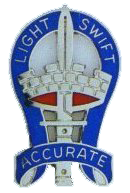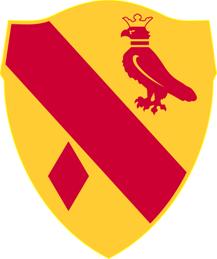|
Sông Bé Base Camp
Sông Bé Base Camp (also known as Sông Bé Airfield, Farley Field or Landing Zone Buttons) is a former U.S. Army and Army of the Republic of Vietnam base southwest of Phước Bình in southern Vietnam. History The base was originally established in April 1965 as a 5th Special Forces Detachment B-34 base and was located approximately 2 km southwest of Phước Bình in Phước Long Province. The Battle of Song Be was fought around the base in May 1965. On 10 April 1966 the 173rd Airborne Brigade moved to Sông Bé for Operation Denver and remained there until the end of April. The 199th Light Infantry Brigade was based at Sông Bé from December 1966 to February 1967. The 1st Brigade, 1st Infantry Division comprising: * 1st Battalion, 2nd Infantry Regiment *1st Battalion, 26th Infantry Regiment * 1st Battalion, 28th Infantry Regiment was based at Sông Bé from May until June 1969. The 1st Brigade, 101st Airborne Division was based at Sông Bé in January 1968. ... [...More Info...] [...Related Items...] OR: [Wikipedia] [Google] [Baidu] |
199th Infantry Brigade (United States)
The 199th Infantry Brigade (Light) is a unit of the United States Army which served in the Army Reserve from 1921 to 1940, in the active army from 1966 to 1970 (serving in the Vietnam War), briefly in 1991–1992 at Fort Lewis, and from 2007 as an active army training formation at Fort Benning. Early history Constituted 24 June 1921 in the Organized Reserves as Headquarters and Headquarters Company, 199th Infantry Brigade, an element of the 100th Division. Organized in December 1921 at Huntington, West Virginia. Redesignated 23 March 1925 as Headquarters and Headquarters Company, 199th Brigade. Location changed 27 October 1931 to Parkersburg, West Virginia. Redesigned 24 August 1936 as Headquarters and Headquarters Company, 199th Infantry Brigade. Converted and Redesignated 23 February 1942 as 100th Reconnaissance Troop (less 3rd Platoon), 100th Division (Headquarters and Headquarters Company, 200th Infantry Brigade, concurrently converted and redesignated as the 3rd Platoon, 1 ... [...More Info...] [...Related Items...] OR: [Wikipedia] [Google] [Baidu] |
Installations Of The United States Army In South Vietnam ) or political one
{{disambig ...
Installation may refer to: * Installation (computer programs) * Installation, work of installation art * Installation, military base * Installation, into an office, especially a religious (Installation (Christianity) Installation is a Christian liturgical act that formally inducts an incumbent into a new role at a particular place such as a cathedral. The term arises from the act of symbolically leading the incumbent to their stall or throne within the cathedra ... [...More Info...] [...Related Items...] OR: [Wikipedia] [Google] [Baidu] |
Lockheed C-130 Hercules
The Lockheed C-130 Hercules is an American four-engine turboprop military transport aircraft designed and built by Lockheed (now Lockheed Martin). Capable of using unprepared runways for takeoffs and landings, the C-130 was originally designed as a troop, medevac, and cargo transport aircraft. The versatile airframe has found uses in other roles, including as a gunship ( AC-130), for airborne assault, search and rescue, scientific research support, weather reconnaissance, aerial refueling, maritime patrol, and aerial firefighting. It is now the main tactical airlifter for many military forces worldwide. More than 40 variants of the Hercules, including civilian versions marketed as the Lockheed L-100, operate in more than 60 nations. The C-130 entered service with the U.S. in 1956, followed by Australia and many other nations. During its years of service, the Hercules has participated in numerous military, civilian and humanitarian aid operations. In 2007, the C- ... [...More Info...] [...Related Items...] OR: [Wikipedia] [Google] [Baidu] |
Republic Of Vietnam Air Force
The South Vietnam Air Force, officially the Republic of Vietnam Air Force (RVNAF; vi, Không lực Việt Nam Cộng hòa, KLVNCH; french: Force aérienne vietnamienne, FAVN) (sometimes referred to as the Vietnam Air Force or VNAF) was the aerial branch of the Republic of Vietnam Military Forces, the official military of the Republic of Vietnam (South Vietnam) from 1955 to 1975. The RVNAF began with a few hand-picked men chosen to fly alongside French pilots during the State of Vietnam era. It eventually grew into the world's fourth largest air force at the height of its power, in 1974, just behind the Soviet Union, the USA, and the People's Republic of China. Other sources state that VNAF was the sixth largest air force in the world, just behind the Soviet Union, the USA, China, France and West Germany. It is an often neglected chapter of the history of the Vietnam War as they operated in the shadow of the United States Air Force (USAF). It was dissolved in 1975 after the F ... [...More Info...] [...Related Items...] OR: [Wikipedia] [Google] [Baidu] |
9th Cavalry Regiment (United States)
The 9th Cavalry Regiment is a parent cavalry regiment of the United States Army. It is not related to the 9th Kansas Cavalry Regiment of the Union Army During the American Civil War, the Union Army, also known as the Federal Army and the Northern Army, referring to the United States Army, was the land force that fought to preserve the Union of the collective states. It proved essential to th .... Historically, it was one of the Army's four segregated African-American regiments and was part of what was known as the Buffalo Soldier, Buffalo Soldiers. The regiment saw combat during the American Indian Wars, Indian and Spanish–American Wars. During Westward Expansion, the regiment provided escort for the early western settlers and maintained peace on the American frontier. , the 1st Battalion and 4th Squadron serve with the 2nd Brigade Combat Team, 1st Cavalry Division (United States), 2nd Brigade Combat Team, 1st Cavalry Division as a combined arms battalion and an Armoure ... [...More Info...] [...Related Items...] OR: [Wikipedia] [Google] [Baidu] |
77th Field Artillery Regiment (United States)
The 77th Field Artillery Regiment is a field artillery regiment of the United States Army. First constituted 1916 in the Regular Army as a cavalry regiment. Reorganized in 1917 as field artillery and given its current designation. History Constituted 1 July 1916 in the Regular Army as the 19th Cavalry. Organized 23 May-11 June 1917 at Fort Ethan Allen, Vermont. Converted and redesignated 1 November 1917 as the 77th Field Artillery. Assigned 19 November 1917 to the 4th Division. Inactivated 21 September 1921 at Camp Lewis, Washington. Relieved 24 March 1923 from assignment to the 4th Division and assigned to the 7th Division. Relieved 1 January 1930 from assignment to the 7th Division and assigned to the 4th Division. (1st Battalion activated 1 January 1935 at Fort Sill, Oklahoma). Activated (less 1st Battalion) 1 November 1935 at Fort D. A. Russell, Texas. Relieved 16 October 1939 from assignment to the 4th Division. Regiment broken up 24 February 1944 and its elem ... [...More Info...] [...Related Items...] OR: [Wikipedia] [Google] [Baidu] |
40th Field Artillery Regiment (United States)
The 40th Field Artillery Regiment is a field artillery regiment of the United States Army, first Constituted 5 July 1918 in the National Army (USA). Lineage Constituted 5 July 1918 in the National Army as the 40th Field Artillery and assigned to the 14th Division Organized 10 August 1918 at Camp Custer, Michigan Demobilized 6 February 1919 at Camp Custer, Michigan Reconstituted 1 October 1933 in the Regular Army the 40th Field Artillery Activated 4 June 1941 at Camp Roberts, California, Camp Roberts, California Regiment broken up 1 March 1943 and its elements reorganized and redesignated as follows: Headquarters and Headquarters Battery as Headquarters and Headquarters Battery, 40th Field Artillery Group 1st and 2d Battalions as the 974th and 975th Field Artillery Battalions, respectively After 1 March 1943, the above units underwent changes as follows: Headquarters and Headquarters Battery, 40th Field Artillery Group, inactivated 15 March 1946 in Germany Activated 26 Apr ... [...More Info...] [...Related Items...] OR: [Wikipedia] [Google] [Baidu] |
19th Field Artillery Regiment (United States)
The 19th Field Artillery Regiment is a Field Artillery regiment of the United States Army first formed in 1916. History The 19th Field Artillery was Constituted 1 July 1916 in the Regular Army. Lineage Distinctive unit insignia *Description A gold color metal and enamel device 1 1/16 inches (2.70 cm) in height overall consisting of a shield blazoned: Or, a bend Gules between in chief an eagle close of the same ducally crowned and gorged with a collar of the first and in base a fusil of the like. *Symbolism Scarlet and yellow are the colors used for Artillery. The red diamond is indicative of the 5th Division with which the Regiment served after it was organized in 1917 by transfer of men from the 7th Division. The red bend, from the arms of Lorraine, commemorates the baptism of fire from the Regiment in taking Frapelle east of St. Die in the Vosges in the Lorraine. The eagle, the device of St Mihiel, represents the heavy fighting the Regiment participated in at St. Mihiel ... [...More Info...] [...Related Items...] OR: [Wikipedia] [Google] [Baidu] |
12th Cavalry Regiment (United States)
The 12th Cavalry is a cavalry regiment of the United States Army. History On 2 February 1901, Congress authorized the organization of the Twelfth Regiment of Cavalry, Army of the United States. Under this authority, the regiment was formed at Fort Sam Houston, Texas on 8 February 1901. From 1901 until 1911, the regiment served posts in Texas, Georgia, and the Philippines. During World War II the 12th Cavalry served as an infantry regiment within the 1st Cavalry Division. The regiment was deactivated prior to the 1st Cavalry Division's service in the Korean War, but its lineage was resurrected in with the creation in 1957 of the Combat Arms Regimental System, in which the battalions listed below were created. During the Cold War 3rd Squadron 12th Cavalry was assigned to the 3rd Armored Division in Germany as the divisional cavalry squadron. The 4th Squadron 12th Cavalry was assigned to the 5th Infantry Division (Mechanized) at Fort Carson, CO, in the 1960s and at Fort Polk, ... [...More Info...] [...Related Items...] OR: [Wikipedia] [Google] [Baidu] |
7th Cavalry Regiment (United States)
The 7th Cavalry Regiment is a United States Army cavalry regiment formed in 1866. Its official nickname is "Garryowen", after the Irish air " Garryowen" that was adopted as its march tune. The regiment participated in some of the largest battles of the Indian Wars, including its famous defeat at the Battle of Little Bighorn, where its commander Lieutenant Colonel George A. Custer was killed. The regiment also committed the Wounded Knee Massacre, where more than 250 men, women and children of the Lakota were killed. The 7th Cavalry became part of the 1st Cavalry Division in the 1920s, it went on to fight in the Pacific Theater of World War II and took part in the Admiralty Islands, Leyte and Luzon campaigns. It later participated several key battles of the Korean War. During the Korean War the unit committed the No Gun Ri massacre, in which between 250–300 South Korean refugees were killed, mostly women and children. The unit later participated in the Vietnam War. It disti ... [...More Info...] [...Related Items...] OR: [Wikipedia] [Google] [Baidu] |
101st Airborne Division (United States)
The 101st Airborne Division (Air Assault) ("Screaming Eagles") is a light infantry division of the United States Army that specializes in air assault operations. It can plan, coordinate, and execute multiple battalion-size air assault operations to seize terrain. These operations can be conducted by mobile teams covering large distances, fighting behind enemy lines, and working in austere environments with limited or degraded infrastructure.After Almost 5 Years, Army's 101st Airborne Will Return to Full Air Assault Power Military.com, by Matthew Cox, dated 16 October 2019, last accessed 24 December 2020 Its unique battlefield mobility and high ... [...More Info...] [...Related Items...] OR: [Wikipedia] [Google] [Baidu] |








